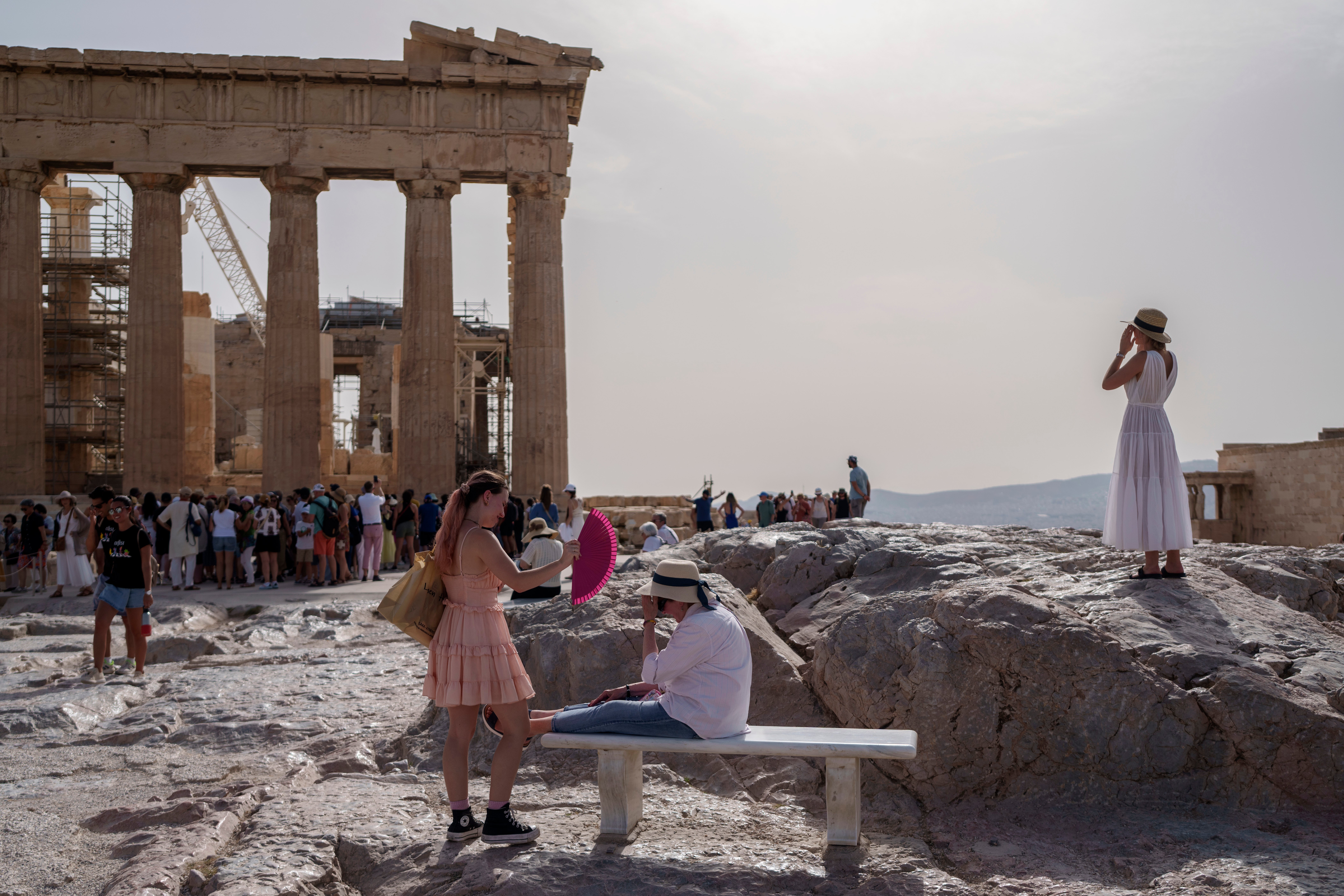Greece is preparing to host a record number of visitors – just as it faces a new weather-related crisis.
Most of the country has seen little or no rain in months. Now, as the islands prepare to host summer tourists, the strain on water supplies has rarely been heavier, officials, farmers and scientists said.
The biggest reservoir on the Greek island of Naxos has dried up, useful only to the turtles that cruise its muddy shallows. Downstream, sea water has seeped into empty irrigation wells, harming the island’s prized potato crop.
Further south, on Karpathos island, authorities have imposed restrictions on topping up swimming pools, while in the northern island of Thasos, officials are seeking a desalination unit to make sea water drinkable.
“There has been an intense shortage of rainfall across the Mediterranean and, on Naxos particularly, our surface reservoirs are empty,” said the island’s mayor, Dimitris Lianos.
Millions of tourists visit Greece each year to enjoy its ancient sites, pristine beaches and turquoise waters.
But climate change impacts, including higher temperatures, erratic rainfall and wildfires threaten the future of the country’s biggest economic driver.

This year feels especially fraught. After its warmest winter on record, wildfires began unusually early, some in areas where there would normally be snow. At least six tourists, including well-known British television presenter Michael Mosley, died last month as heatwaves swept the country.
Climate experts fear the worst is yet to come. Andrea Toreti, the coordinator of the European and global drought observatory of the Copernicus Emergency Management Service, said once the effects of drought become visible, it is too late to take action.
“We need to avoid thinking in an emergency mode, (instead) looking at prevention and preparedness,” Toreti said.
The water shortage is stark in Naxos, a mountainous island of 20,000 people in one of the most popular – and dry – parts of the Aegean Sea. Tens of thousands of tourists flock to its shores each day during summer.
The island’s two reservoirs hold 220,000 cubic metres (7.7 million cubic feet) of useable water, a third of last year’s level and the…
Click Here to Read the Full Original Article at The Independent Travel…
